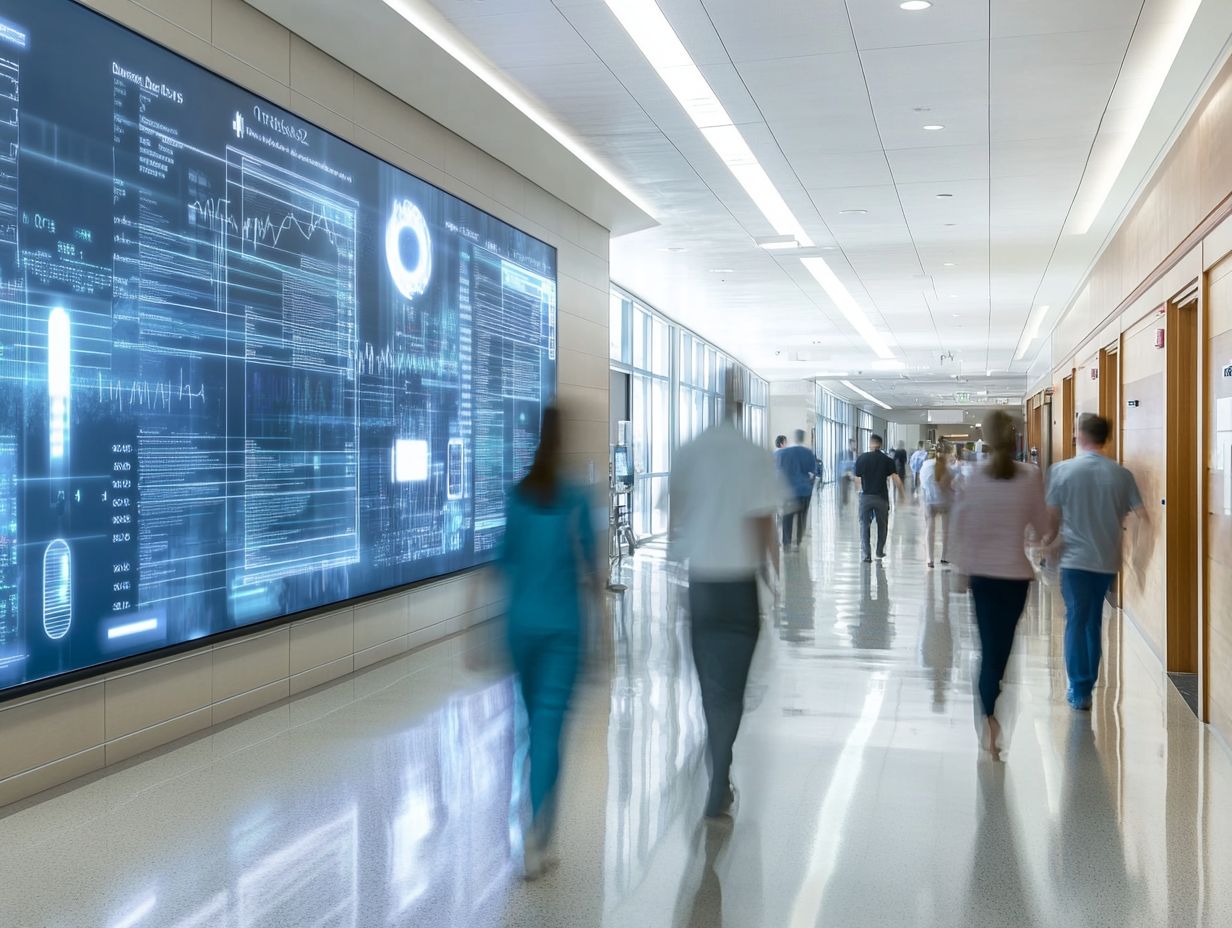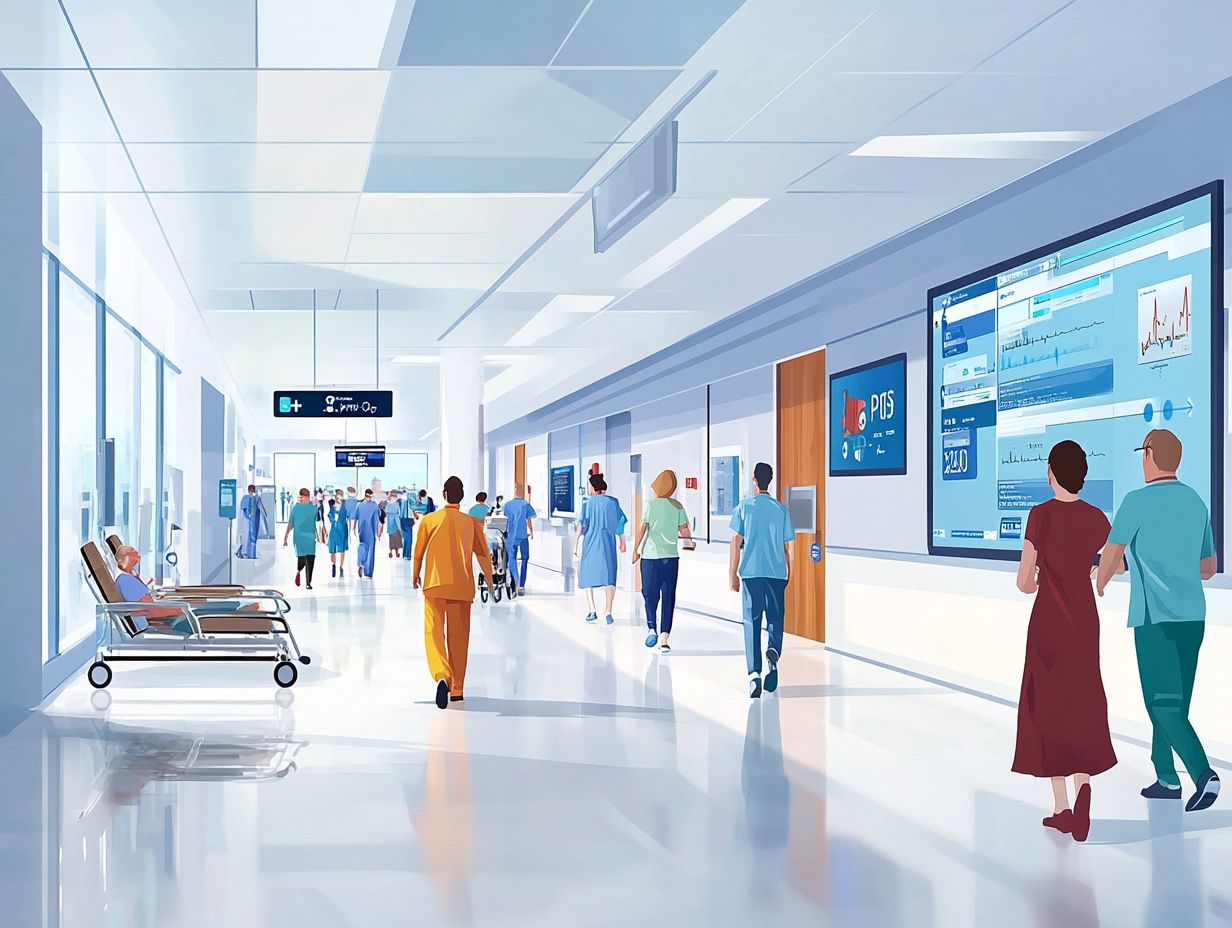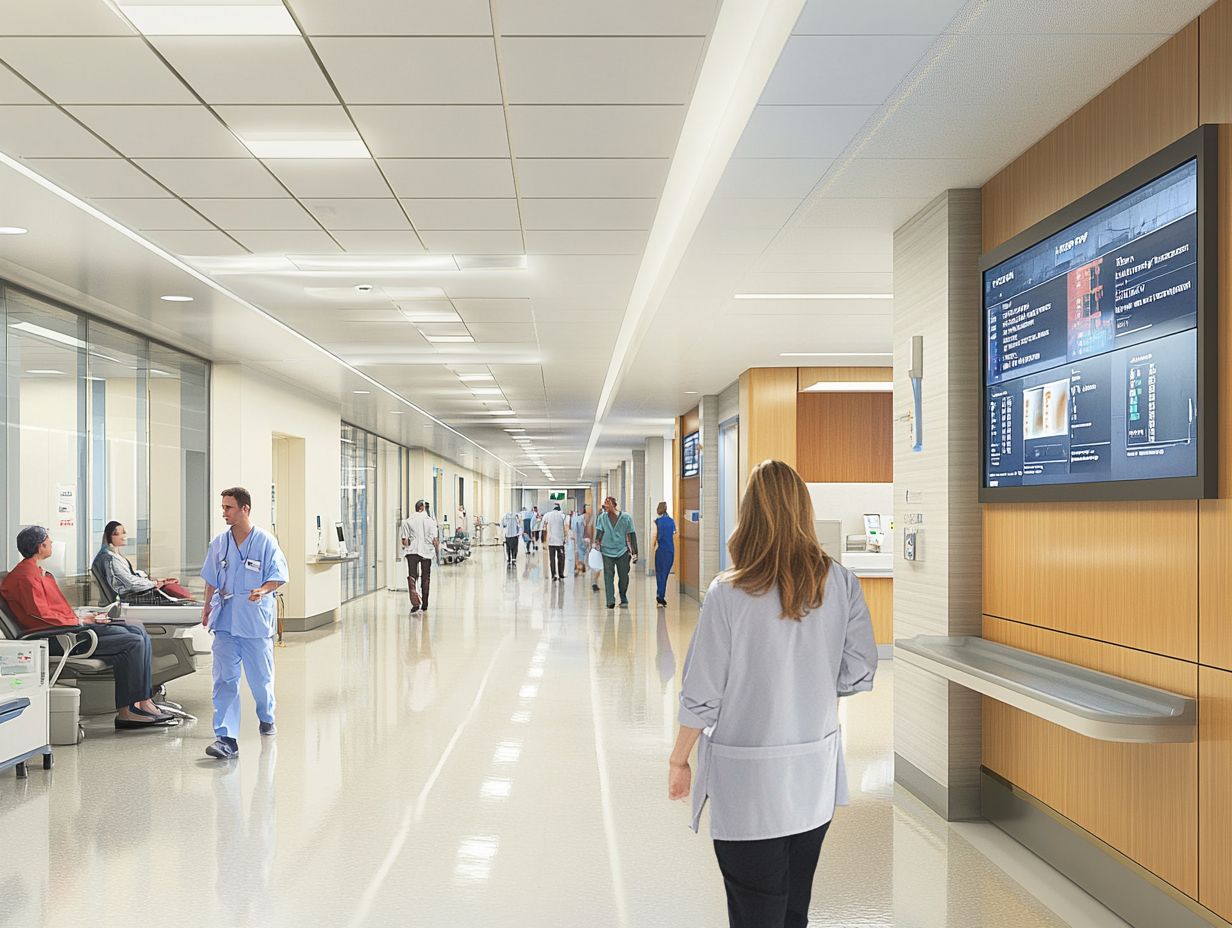Foot traffic data plays a crucial role in enhancing patient flow and operational efficiency within healthcare institutions, particularly given the fast-paced nature of the sector. This article defines foot traffic data, explains how it is collected, and discusses its significance in healthcare settings. It highlights the challenges associated with poor patient flow and the negative impacts it can have, as well as how foot traffic data can help identify bottlenecks and improve operational processes. Additionally, the article covers best practices for effectively utilizing this data to ensure a smoother experience for both patients and staff.
Understanding Foot Traffic Data and Its Role in Health System Optimization

Foot traffic data refers to the information collected about visitors to a facility, including their patterns, such as the number of patients and their movements.
Understanding this data is essential for healthcare facilities aiming to improve patient flow, optimize service delivery, and enhance overall operational efficiency.
By collecting and analyzing foot traffic data, healthcare institutions can identify peak visitation times, improve queue management, determine optimal resource allocation, and assess the effectiveness of the facility’s layout and design.
The implementation of real-time data analytics, including predictive modeling and trend analysis, can streamline decision-making processes and enhance the patient experience, ultimately contributing to better patient care and higher levels of patient satisfaction.
What is Foot Traffic Data and How is it Collected?
Foot traffic data refers to the quantitative measurement of how many individuals visit a specific location, and it is particularly valuable in healthcare settings for providing detailed insights into patient movement, patient navigation, and behavior patterns.
This data is collected using various methodologies, including electronic health records, digital signage, and observational methods. Modern technology has significantly enhanced the accuracy of foot traffic analysis, as healthcare facilities increasingly rely on sensors and analytics software to monitor visitor flow.
These systems can track patient movement through different departments, identify peak times, and pinpoint bottlenecks in service areas. Administrators can leverage this data to optimize routing and reduce waiting times, resulting in a smoother experience that enhances patient satisfaction.
As healthcare analytics continue to evolve, facilities can utilize these insights to make informed decisions, tailoring services to better meet patient needs and ensuring a more seamless healthcare experience.
The Importance of Patient Flow in Healthcare Facilities

Patient flow is a crucial aspect of healthcare facilities that directly influences operational efficiency, waiting times, and ultimately, patient outcomes. A smooth and effective patient journey ensures timely service delivery and enhances the overall patient experience.
Conversely, disruptions in patient flow can result in increased waiting times, decreased patient satisfaction, and even negatively impact health outcomes. By understanding the dynamics of patient flow, healthcare providers can implement strategies to optimize operational processes, improve resource allocation, and enhance patient-centered care.
This, in turn, leads to better healthcare metrics and operational insights.
Challenges and Consequences of Poor Patient Flow
Poor patient flow in healthcare facilities can lead to increased waiting times and traffic congestion, ultimately resulting in worse patient outcomes. These challenges are often caused by inefficient appointment scheduling, ineffective patient routing strategies, and inadequate resource allocation.
For instance, a shortage of staff at a busy urban hospital during peak hours may force patients to wait for hours for critical services, negatively impacting their overall experience. Delays in treatment not only frustrate individuals seeking care but can also deter them from returning, which may harm patient retention rates.
The adoption of telehealth and digital scheduling systems has the potential to transform how facilities manage patient flow. It is essential to monitor these trends, as the integration of technology and proactive resource management can lead to improved patient outcomes and enhanced experiences.
Using Foot Traffic Data to Improve Patient Flow and Healthcare Operations

Utilizing foot traffic data and spatial analysis can significantly enhance patient flow, healthcare operations, and improve overall operational efficiency in healthcare facilities.
By analyzing visitor patterns, patient movement, and patient throughput, healthcare administrators can identify bottlenecks and implement workflow improvement strategies that enhance capacity management and resource utilization.
Additionally, real-time data analytics facilitates more well-considered choices, allowing facilities to proactively respond to shifts in patient demographics and traffic patterns.
Identifying Bottlenecks and Improving Efficiency
Identifying bottlenecks in patient flow is essential for improving operational efficiency in healthcare facilities. These bottlenecks can occur at various access points, including the patient intake process, waiting areas, and treatment rooms, and can significantly impact patient routing and overall throughput.
By closely analyzing foot traffic data, healthcare administrators can pinpoint specific locations where delays are most pronounced. Technologies like heat maps and patient tracking systems facilitate the monitoring of visitor flow patterns and their associated wait times.
When data analysis reveals consistent congestion, targeted solutions such as streamlining check-in procedures or reallocating staff resources during peak hours can be implemented. Additionally, adopting continuous improvement measures, such as real-time feedback systems and staff training, ensures that efficiencies are not only achieved but also maintained over time, ultimately benefiting both patients and providers.
Implementing Changes and Measuring Success

Implementing changes to improve patient flow necessitates a systematic approach along with ongoing monitoring and evaluation to assess their effectiveness.
Appropriate healthcare metrics for measuring the impact of these changes include:
- Patient experience metrics
- Patient flow measures
- Operational effectiveness metrics
Evaluating and implementing adjustments based on patient flow metrics, such as foot traffic data analysis, is essential for ensuring seamless transitions and timely care. Analyzing the timing and location of patient arrivals and departures enables healthcare facilities to adjust schedules and allocate resources, such as staff and amenities, to better meet patient flow needs.
Key Performance Indicators (KPIs) help organizations measure their progress by allowing comparisons with industry standards. Patient satisfaction surveys and other feedback channels actively engage patients in the improvement process.
These metrics enable facilities to assess the effects of changes and identify the need for further adjustments, fostering a culture of continuous improvement in patient flow.
Best Practices for Utilizing Foot Traffic Data in Healthcare Facilities for Patient-Centric Care
Best practices for utilizing foot traffic data to enhance patient engagement and optimize facilities in healthcare settings include several key strategies.
Healthcare facilities that leverage technology and analytics frameworks can effectively transform foot traffic data into actionable insights. These insights can inform strategic resource management decisions and improve patient access points.






